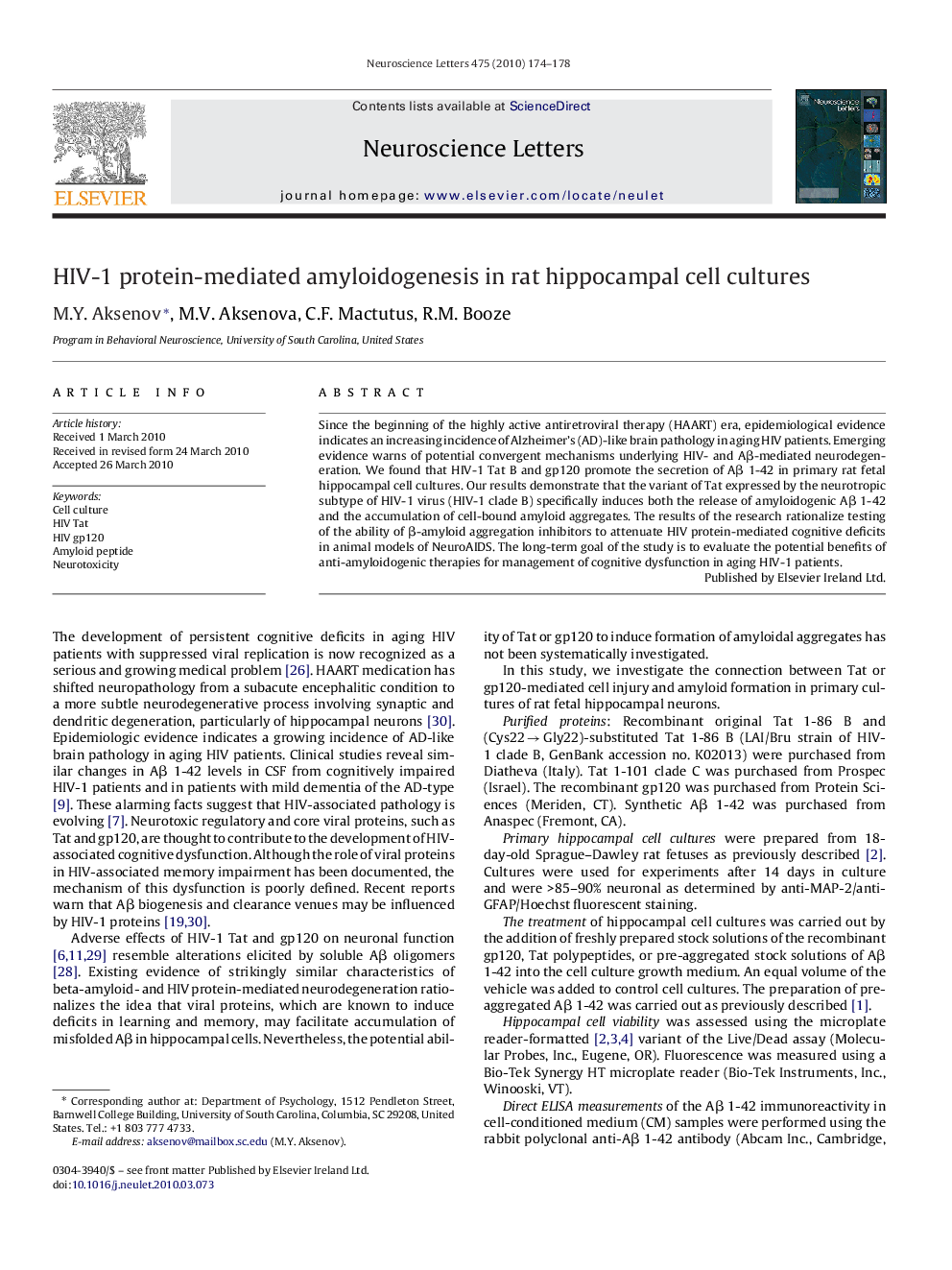| Article ID | Journal | Published Year | Pages | File Type |
|---|---|---|---|---|
| 4346077 | Neuroscience Letters | 2010 | 5 Pages |
Abstract
Since the beginning of the highly active antiretroviral therapy (HAART) era, epidemiological evidence indicates an increasing incidence of Alzheimer's (AD)-like brain pathology in aging HIV patients. Emerging evidence warns of potential convergent mechanisms underlying HIV- and Aβ-mediated neurodegeneration. We found that HIV-1 Tat B and gp120 promote the secretion of Aβ 1-42 in primary rat fetal hippocampal cell cultures. Our results demonstrate that the variant of Tat expressed by the neurotropic subtype of HIV-1 virus (HIV-1 clade B) specifically induces both the release of amyloidogenic Aβ 1-42 and the accumulation of cell-bound amyloid aggregates. The results of the research rationalize testing of the ability of β-amyloid aggregation inhibitors to attenuate HIV protein-mediated cognitive deficits in animal models of NeuroAIDS. The long-term goal of the study is to evaluate the potential benefits of anti-amyloidogenic therapies for management of cognitive dysfunction in aging HIV-1 patients.
Related Topics
Life Sciences
Neuroscience
Neuroscience (General)
Authors
M.Y. Aksenov, M.V. Aksenova, C.F. Mactutus, R.M. Booze,
